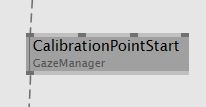heyhey!
As promised, here goes the EyeTribe VL plugin.
Unzip and start with the helppatches in /vl
/vl/Eyetracker (Devices TheEyeTribe) help.v4p
/vl/CalibrationRunner (TheEyeTribe) help.v4p
You will need the EyeTribe Server that comes with the SDK:
http://dev.theeyetribe.com
Device needs USB3.
As for the device itself, when the lighting is good it will give you quite accurate results. I found it really interesting to record how people look at pictures, especially portraits, so I have included a girlpower that does just that.
Tested in Win10 on my Laptop and a Windows Surface.
Please use latest Alpha.
The Eyetracker client was imported with the (not yet released) VL .net importer. Everything else is patched in VL, with minor exceptions that needed a C# wrapper to be used in VL. C# code included.
There are still some things to finetune, then I’ll make a contribution for you.
Everything else should be explained in the helppatches.
Any feedback really appreciated!
…yours faithfully,
vvvvpraxisintern dominikkoller
TheEyeTribe EyeTracking VL (1.5 MB)




